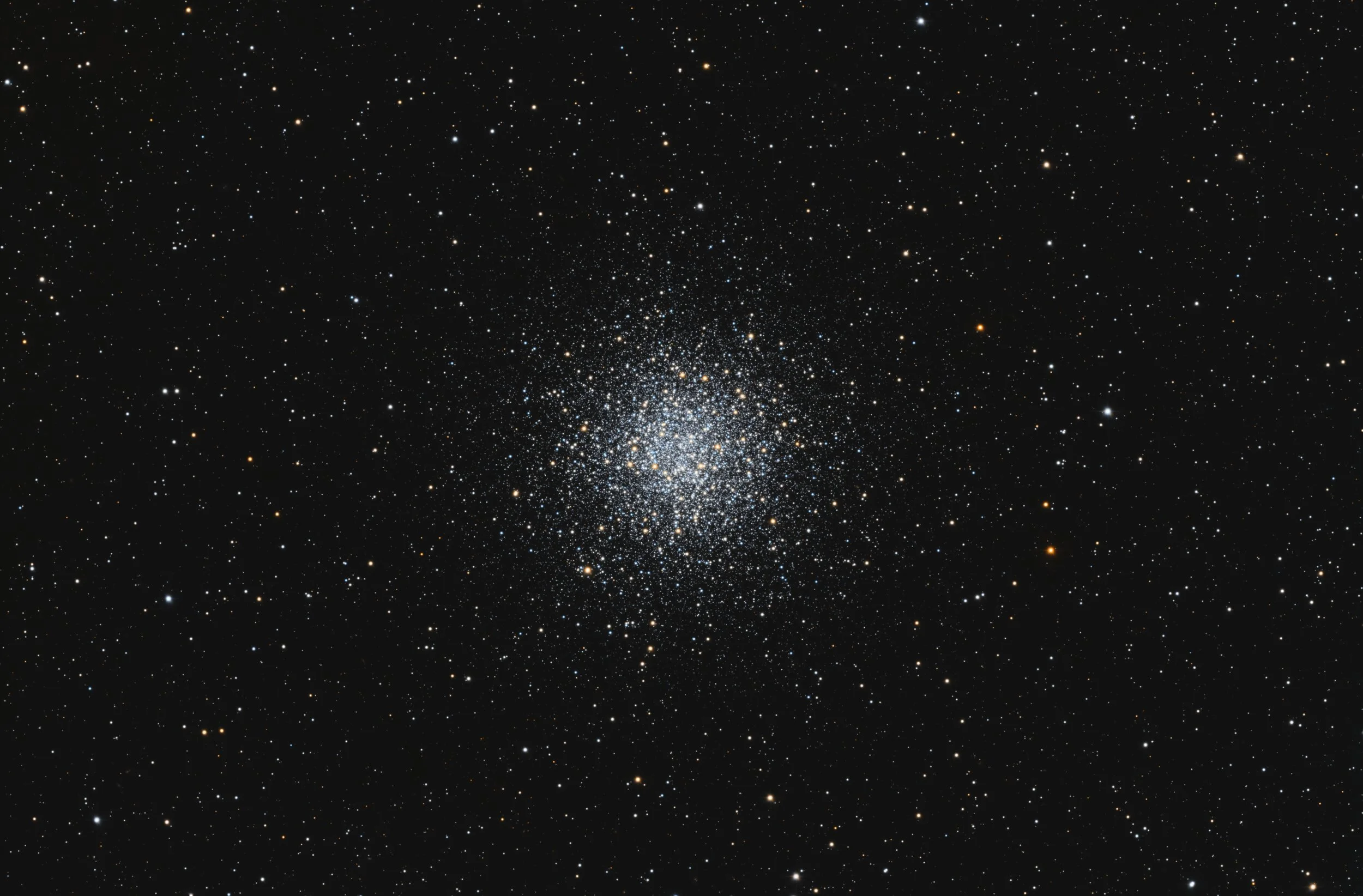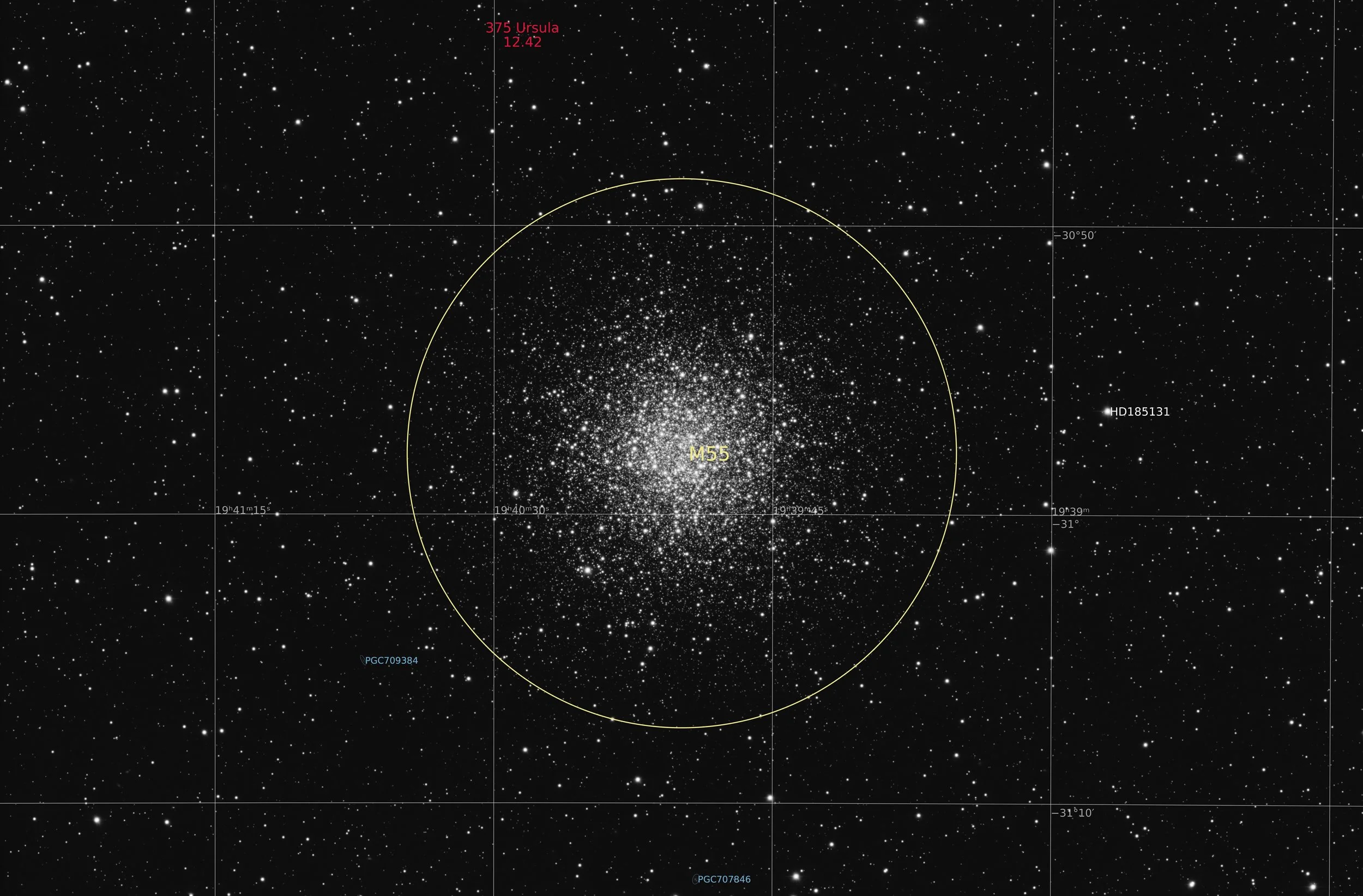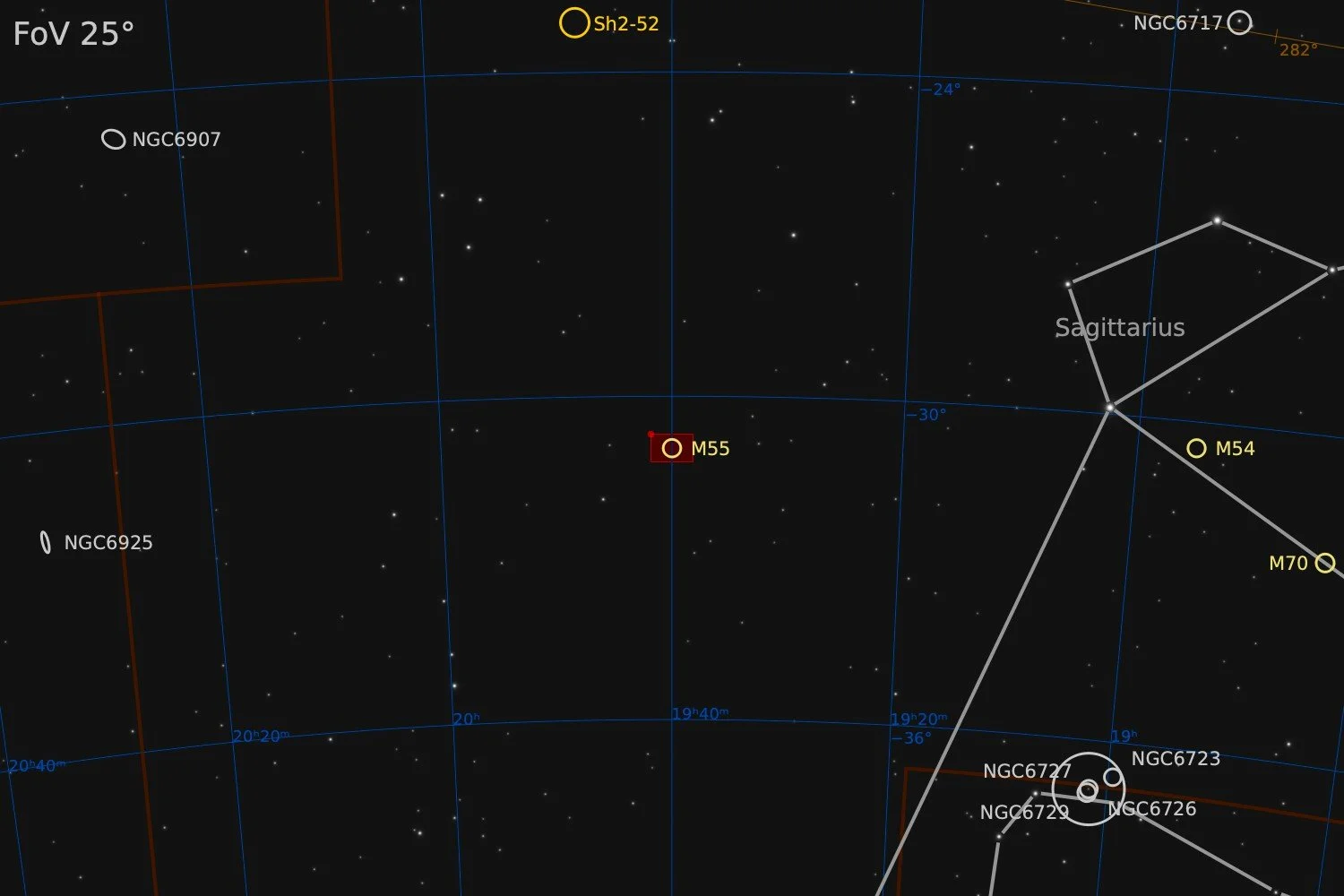M55
NGC 6809, Specter Cluster
47’ x 30’ | 0.3”/px | 9376 × 6164 px | full resolution
Sagittarius
RA 19h 39m Dec -30° 57’ | 0°



Messier 55, also known as NGC 6809, or Specter Cluster, is a globular cluster in the south of the constellation Sagittarius. It was discovered by Nicolas Louis de Lacaille in 1752 while observing from what today is South Africa. Starting in 1754, Charles Messier made several attempts to find this object from Paris but its low declination meant from there it rises daily very little above the horizon, hampering observation. He observed and catalogued it in 1778. M55 is about 17,600 light-years away from Earth. It contains about 269,000 solar masses (M☉). As with other Milky Way globular clusters, it has few elements other than hydrogen and helium compared to the Sun. Messier 55 therefore has "low metallicity". This quantity is normally listed as the base 10 logarithm of the proportion of the Sun; for NGC 6809 the metallicity is given by: [Fe/H] = −1.94 dex, whereby −2 would be 100 times less iron than the Sun. This means the cluster has 1.1% of the proportion of the Sun's iron compared to hydrogen and helium. Only about 55 variable stars have been found in the central part of M55.
source: Wikipedia
Data Acquisition
Data was collected over 7 nights in September 2025, using a 14” reflector telescope with full-frame camera at the remote observatory in Spain. Data was gathered using standard RGB filters. A total of approximately 9 hours of data was finally combined to create the final image.
Location Remote hosting facility IC Astronomy in Oria, Spain (37°N 2°W)
Sessions
Frames
Equipment
Telescope
Mount
Camera
Filters
Guiding
Accessoires
Software
Planewave CDK14 (2563mm @ f/7.2), Optec Gemini Rotating focuser
10Micron GM2000HPS, custom pier
Moravian C3-61000 Pro (full frame), cooled to -10 ºC
Chroma 2” RGB unmounted, Moravian filterwheel L, 7-position
Unguided
Compulab Tensor I-22, Dragonfly, Pegasus Ultimate Powerbox v2
Voyager Advanced, Viking, Mountwizzard4, Astroplanner, PixInsight 1.9.3
Processing
All processing was done in Pixsinsight unless stated otherwise. Default features were enhanced using scripts and tools from RC-Astro, SetiAstro, GraXpert, CosmicPhotons and others. Images were calibrated using 50 Darks, 50 Flats, and 50 Flat-Darks, registered and integrated using WeightedBatchPreProcessing (WBPP). The processing workflow diagram below outlines the steps taken to create the final image.
Originally 10h of data was shot, but as more often the case with these objects that are very low to the horizon, quite a few frames did not meet the stacking criteria, so eventually less than 9h of data was integrated into this final image.
During annotation of the image, asteroid 375 Ursula was detected. This is one of the largest known asteroids with a diameter of approximately 200km. On the integrated stack, the asteroid is not visible. One would expect such a moving object to be removed during the pixel rejection phase, so this was no surprise. But I could also not find any moving object on the individual images when blinking them, and that was a bit more surprising. Apparently it was a too dark object to be picked up with only the RGB filters. Perhaps if I had shot luminance images it would have shown.
During colour calibration a strange thing happened. It is quite normal for my RGB images to have to boost Blue relative to Green and Red. SPCC produces typical WhiteBalance factors of 0.65-0.7 for both Red and Green versus 1.0 for Blue. But in this case, the blue was apparently a lot weaker, as WhiteBalance factors for Red and Green were 0.35 and 0.36 respectively. I tried different variations, using different colour calibration techniques, different selections for background neutralisation etc. And while they all deviated slightly from each other, the big picture was always the same. So I went on with processing using the first outcome from SPCC. Then I noticed after stretching that a lot of the stars in the cluster had little magenta halo’s around them. I would imagine this was related to the same problem that caused the colour calibration issues in the first place. I went on with removing the magenta halo’s using the standard invert>SCNR/invert workflow. A very light green-cast in the background was further removed by applying SCNR to the image as a whole as well. Perhaps because of all these edits, the final image came out a lot more blue-ish than expected, so as a final touch, I reduced the saturation for the blues and increase that of the reds. With the blue channel being so different than normal, I can only imagine that the underlying cause of it is the very low altitude of this image and not so ideal seeing conditions. Such conditions typically affect the blue a lot more than the other channels.
The rest of the processing workflow followed regular procedures.
Processing workflow (click to enlarge)
This image has been published on Astrobin.
